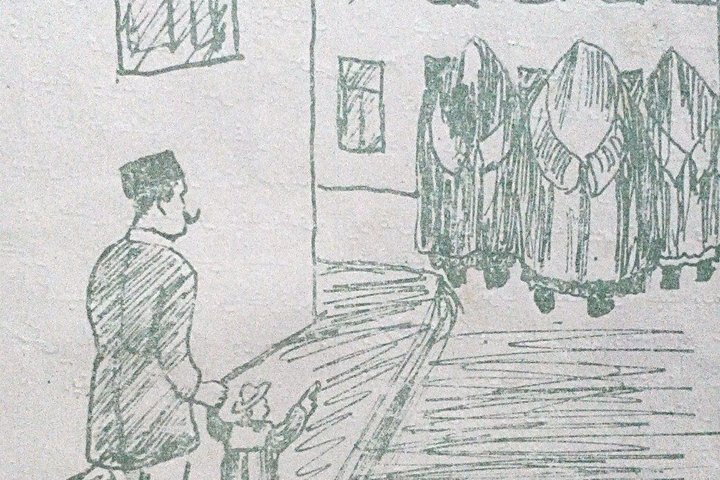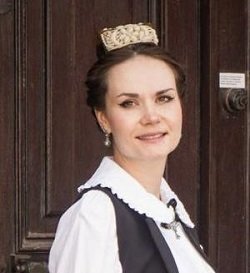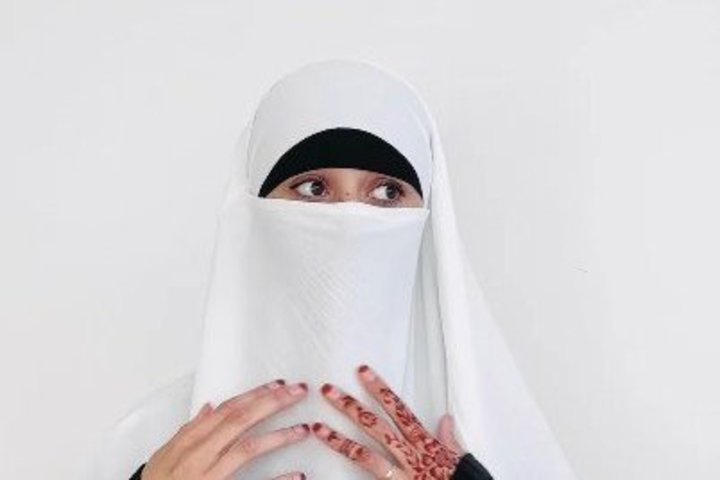‘If a person wants to wear a niqab — they are welcome, but I will explain to my children that they shouldn’t’
The most conservative form of Muslim clothing became the topic of a draft bill in the State Duma
The topic of niqabs suddenly became relevant for State Duma deputies: a bill has been submitted to the parliament according to which the subjects of Russia can prohibit wearing religious or other clothing in public places and state organisations that completely or partially hides the face. Tatarstan experts believe that such choice should be made by the person themselves, and the government is convinced that the restriction may violate human rights to freedom of conscience and freedom of religion.
“I think niqabs should be banned in Russia”
Back in April, Communist Party Deputy Mikhail Matveev sent a request to the Ministry of Internal Affairs to ban the wearing of clothes that hide the face. The parliamentarian meant items of religious clothing: the niqab is a headdress, which has only a narrow slit for the eyes, and the paranja is a long robe covering the entire body, with a net hiding the face. However, the question of wording is still open.
The ministry replied that they had no information about the causal relationship between wearing clothes modeled in accordance with religious rules and committing illegal acts of an extremist orientation.
On May 20, Valery Fadeev, the chairman of the Presidential Human Rights Council, said in an interview with the Parliamentary Newspaper: “I will draw attention to another problem: niqabs that completely cover the face of women are allowed in Russia. Only the eyes remain open. And this is despite that niqabs are now banned even in some Central Asian countries. I will discuss this issue with representatives of traditional Islam and regional authorities. But I will first indicate my position: I think that niqabs should be banned in Russia.”
On May 24, Ildar Alyautdinov, the deputy chairman of the Muslim Spiritual Board, Mufti of Moscow, commented on the situation in his telegram channel: “If official authorities identify a link between wearing the niqab and an increased risk of extremism, and as a result, banning the niqab will serve to save the lives of our citizens, then the Muslim Spiritual Board is ready to support the proposal of V. Fadeev, abandoning the desirable (in this case, the wearing of the niqab) in favour of the mandatory, that is, the preservation of human life and health.”
Matveev later replied in a comment to RBK that the word “niqab” would not be in the bill. The ban applies to any items that hide the face in public places, except for medical masks and work clothes on duty.
Ban in schools
On May 28, Vladislav Davankov, the deputy chairman of the State Duma, deputy from the New People party, introduced a bill to the parliament that the subjects of Russia may prohibit the wearing of religious or other clothing in public places and state organisations that completely or partially hides the face. Amendments to the Administrative Code of the Russian Federation are also being prepared, providing for a minimum fine of 10 thousand rubles.
The explanatory note states that this is necessary “given the current high level of terrorist threats (an indefinite high (yellow) level of terrorist danger has been introduced in a number of subjects of the Russian Federation).” And the hidden person cannot be identified by CCTV cameras.
It is also indicated that the hijab and niqab are prohibited in China in the Xinjiang Uygur Autonomous Region, paranja — in public places in Uzbekistan, and in Kazakhstan the hijab cannot be worn at school.
Besides, the bill proposes to establish bans on such clothes in educational organisations if more than half of the members of the council of parents or legal representatives of underage students, student councils vote in favour.
This is explained by that “in some cases, religious clothing can cause discrimination or bullying among students”.
One cannot help but notice that this resembles the traditional comment that wearing skirts provokes rapists.

“In traditional culture, there was no one right costume”
The government's responses to written questions from deputies of the State Duma of the Russian Federation, asked before the Cabinet's report in the lower house of parliament, indicated that the introduction of such restrictions could violate human rights to freedom of conscience and freedom of religion.

“Today there is a desire to preserve their heritage and, perhaps, its representation in the clothes of the 21st century," continues Gatina-Shafikova. “Various projects are being implemented, and with state support, where we not only tell, but also recreate costumes of the 19th century. Perhaps, for many they are no longer recognisable, since we were brought up in the Soviet past, with an average rural and urban stage costume. A very terrible phrase is “that's how the Tatar women did not wear, and in general — it's all imported, not our native”. I know a lot of young girls and adult women who try to mix the modern style and traditions of Tatar costume, and they both wear a headscarf and not.

In his telegram channel “Tales from Babaika”, the historian shares clippings from the pre-revolutionary press on this topic. For example, this is a 1910 cartoon in which progressive Tatars from the Yalta-Yolt magazine ridicule women dressed in niqabs.
“But we should never forget that in traditional culture there was not one correct costume, it changed with society and absorbed all the fashionable and cultural features inherent in a certain period," Gatina-Shafikova concludes.
“A shawl and a long skirt are the traditional clothes of the indigenous peoples of Russia”

“Yes, they used to forbid the niqab in madrassas, now it is allowed, although teachers are fighting against it," says Mindiyarova. “There has been a fashion for this for the last 5 years. I have a negative attitude. If a person wants to wear a niqab, they are welcome, but I will explain to my children that they shouldn't. And I would not defend young women who want to wear a niqab.

